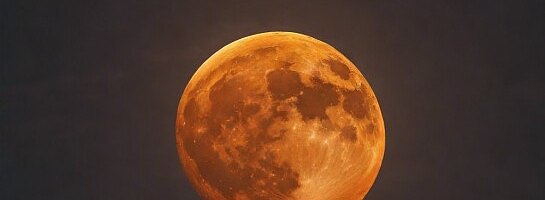To Beautiful Not To Share
The Pink or Seasonal "April" Moon Shot From The Beach With My S24 Ultra On 80x Zoom Tonight In Florida. The Picture Doesn't Do It Justice. A Truly Spectacular View In Person.
Here's a breakdown of all the natural moon phases and phenomena cycles often observed.
A "red" or "pink" moon, when observed either during a lunar eclipse or at moonrise/moonset, can be a captivating natural event. The colors and their intensity result from a combination of atmospheric conditions and the position of the moon relative to the Earth.
Here’s a breakdown of how these phenomena occur:
Red Moon During a Lunar Eclipse1.
Lunar Eclipse Mechanics - A lunar eclipse happens when the Earth comes between the sun and the moon, casting a shadow on the moon. This alignment can only occur during a full moon.
2. Earth’s Atmosphere - As sunlight passes through the Earth's atmosphere during an eclipse, shorter wavelengths of light (blues and greens) are scattered outward by the atmosphere’s particles. - Longer wavelengths (reds) are less easily scattered and pass through the atmosphere, bending (refracting) around the Earth and onto the moon.
3. Color Intensity - The intensity of the red color can vary depending on atmospheric conditions such as dust, humidity, and cloud cover at the time of the eclipse.
Pink Moon as a Seasonal Name.
The term "pink moon" is not related to the actual color of the moon. Rather, it refers to the name given to the full moon of April in some cultures, purportedly named after the herb moss pink, or wild ground phlox, which is one of the earliest widespread flowers of the spring in the Northern Hemisphere.Red/Pink Moon at Moonrise/Moonset
1. Light Scattering - When the moon is close to the horizon at moonrise or moonset, the moonlight must pass through a greater thickness of the Earth’s atmosphere compared to when it is directly overhead.
2. Color Shifts - This means more scattering of the blue and green light, while reds and pinks are less affected, making the moon appear more red or pink.
3. Optical Effects - The thickness of the atmosphere can exaggerate this effect, often leading to a spectacular view of a large, reddish moon near the horizon.Each of these phenomena results from the physics of light and the unique filtering effect of Earth's atmosphere. While a truly "pink" moon as seen universally is a cultural reference and not an astronomical event, red moons during eclipses and moonrises/moonsets provide beautiful and fascinating opportunities to observe the impacts of Earth's atmosphere on the light coming from the moon.
Join FREE & Launch Your Business!
Exclusive Bonus - Offer Ends at Midnight Today
00
Hours
:
00
Minutes
:
00
Seconds
2,000 AI Credits Worth $10 USD
Build a Logo + Website That Attracts Customers
400 Credits
Discover Hot Niches with AI Market Research
100 Credits
Create SEO Content That Ranks & Converts
800 Credits
Find Affiliate Offers Up to $500/Sale
10 Credits
Access a Community of 2.9M+ Members
Recent Comments
15
That is a truly spectacular image you have captured there John!
Appreciate you sharing this with us my friend! :-)
That is really beautiful! You're fortunate to have captured it. Thanks for the awesome share.
Susan
Thank you Susan.
It took many shots to get the perfect one, but was worth every second.
See more comments
Join FREE & Launch Your Business!
Exclusive Bonus - Offer Ends at Midnight Today
00
Hours
:
00
Minutes
:
00
Seconds
2,000 AI Credits Worth $10 USD
Build a Logo + Website That Attracts Customers
400 Credits
Discover Hot Niches with AI Market Research
100 Credits
Create SEO Content That Ranks & Converts
800 Credits
Find Affiliate Offers Up to $500/Sale
10 Credits
Access a Community of 2.9M+ Members

Beautiful!
Jena
Thank you Jena.